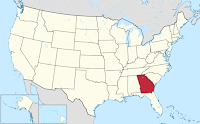Dobrović A, Geček S, Klanjšček T, Haberle I, Dragičević P, Pavić D, Petelinec A, Boštjančić LL, Bonassin L, Theissinger K, Hudina S. 2022. Recurring infection by crayfish plague pathogen only marginally affects survival and growth of marbled crayfish. NeoBiota 77: 155-177. https://doi.org/10.3897/neobiota.77.87474
Abstract
Invasive alien crayfish threaten the diversity of freshwater ecosystems and native crayfish fauna. In Europe, this is largely due to transmission of the crayfish plague to susceptible native crayfish. Many invasive species tolerate crayfish plague, but the infection still has the potential to reduce the fitness of a tolerant host due to energy trade-offs between immune response maintenance and life-history traits, such as growth and reproduction. In combination with other unfavourable conditions, such a response could alter further invasion success of an otherwise successful crayfish invader. We examined whether repeated infection with one of the most virulent haplogroups of crayfish plague agent (Aphanomyces astaci) affects growth or survival of the juvenile marbled crayfish (Procambarus virginalis). Juveniles were exposed to i) two levels of pathogen concentrations, and ii) two different feeding regimes under the higher pathogen concentration. In all performed trials, repeated infection reduced growth rates, while the combination of recurring infection and food limitation significantly increased mortality. The average energy cost of the immune response was estimated at 12.07 J/day for individuals weighing 0.3 grams. Since infections were frequent and pathogen concentrations high, results suggest that marbled crayfish is resistant to A. astaci pathogen and its survival is only affected by adding the stress of food limitation. The survival of almost half of the individuals exposed to high pathogen loads and extreme food limitation indicates that chronic infection by crayfish plague is unlikely to be an important factor impeding invasion success of the marbled crayfish, even under harsh conditions. Our results add to the growing body of evidence that marbled crayfish has potential to become one of the most successful freshwater invaders.
Keywords: food limitation • freshwater • immunity cost • infection • invasive species • trade-off







